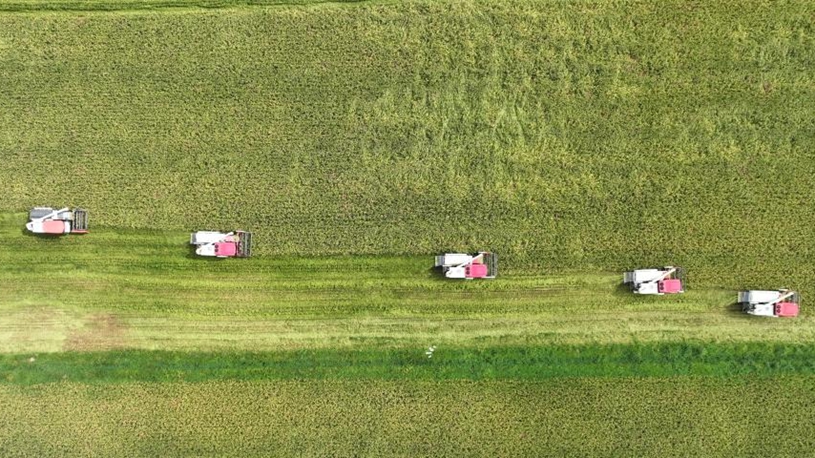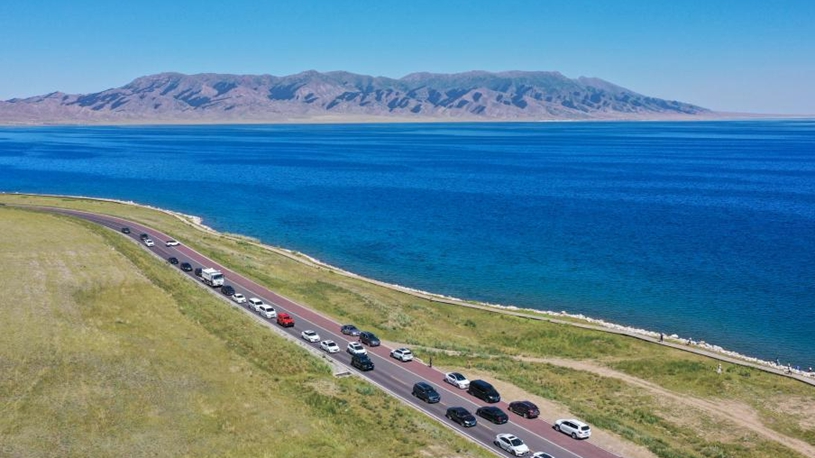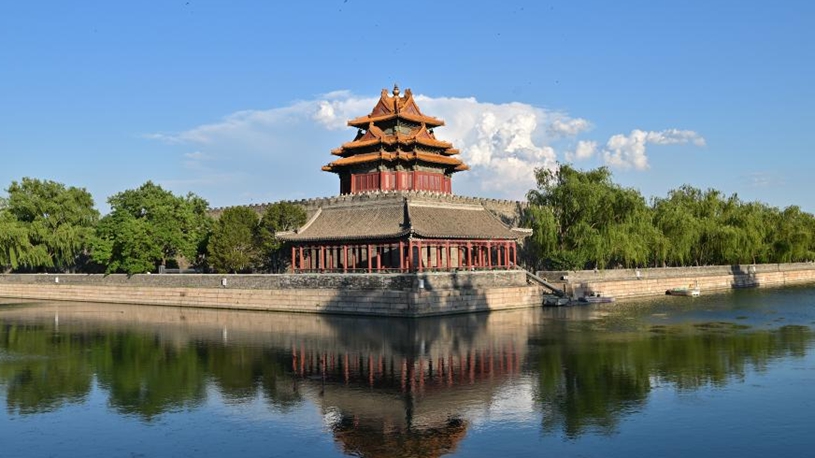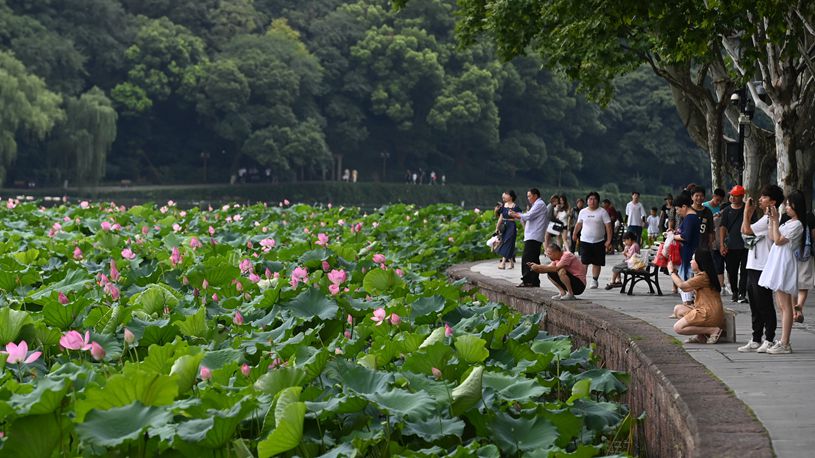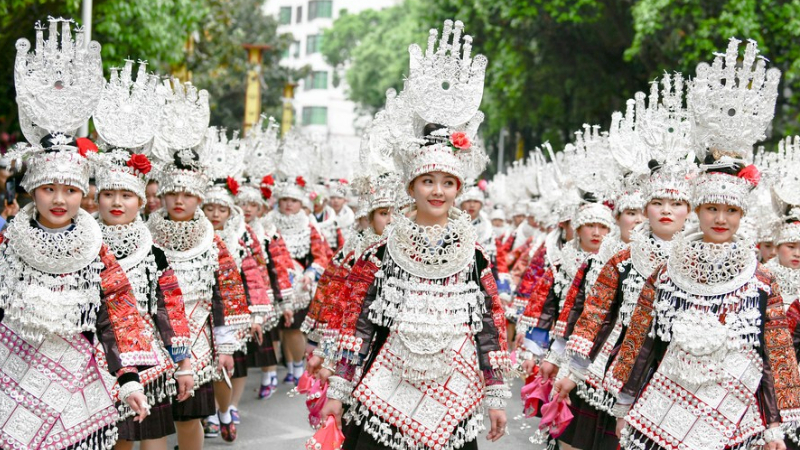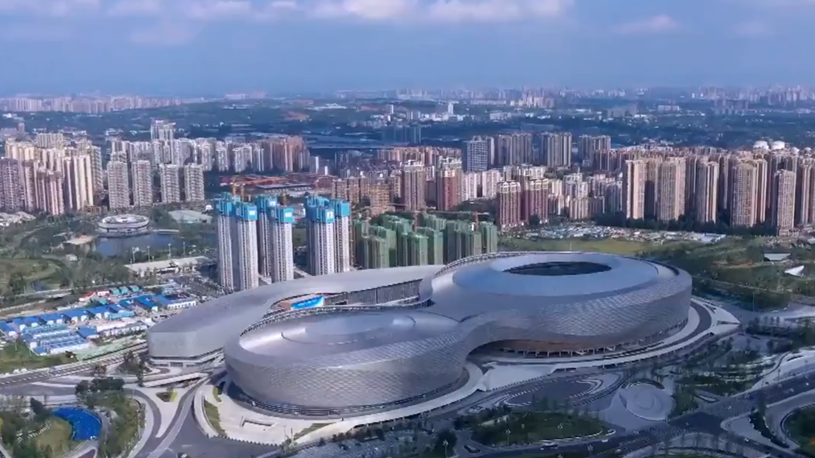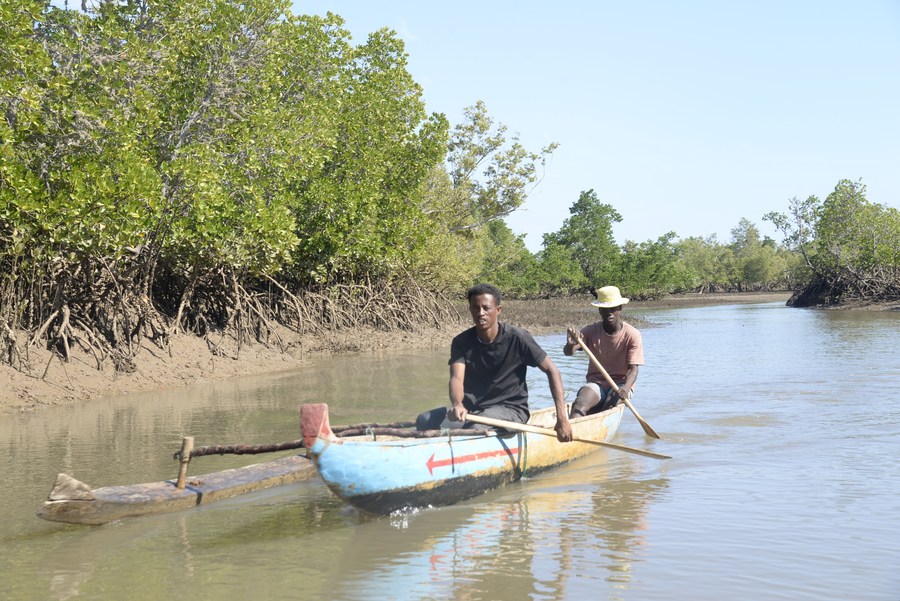
File photo taken on May 23, 2023, shows local people paddling a canoe among mangroves near the village of Kivalo, southwestern Madagascar. (Xinhua/Ling Xin)
The planting of mangroves has changed the lives of the 200 households for the better who used to live on fishing in the village of Kivalo in southwestern Madagascar, an island country in the Indian Ocean.
MORONDAVA, Madagascar, July 27 (Xinhua) -- To arrive in the village of Kivalo in southwestern Madagascar, an island country in the Indian Ocean, visitors have to take a 45-minute boat ride through beautiful mangroves from the nearest land point. Thanks to the efforts of grassroots communities and their global partners, the village now serves as an example of nature conservation that benefits both the environment and the people.
"A hundred years ago, Kivalo was directly exposed to the Mozambique Channel, when the mangroves were not there yet. The change of the riverbed due to successive cyclones has favored the plantations of mangroves around the village," said Justin Ramanahirana, president of a community organization managing mangrove conservation, known as the Analamaitso tsy ho gnan'olo (The green forest that is ours).
The growth of mangroves has changed the lives of the 200 households who used to live on fishing in Kivalo for the better. "We protect the mangrove because all our money comes from it. We can catch 40 kilos of shrimp in a single catch. Thanks to the mangrove, it is no longer necessary to fish further out in the open sea," said Ramanahirana, a 44-year-old father of two sons and five daughters.
As an expert on mangrove conservation, Ramanahirana said different species of mangroves in Kivalo provide flood protection and risk reduction benefits to the local communities. "The mangrove cools the water around it, which helps attract fishery resources," he said, adding that it also acts as a barrier against the winds coming directly from the Mozambique Channel.
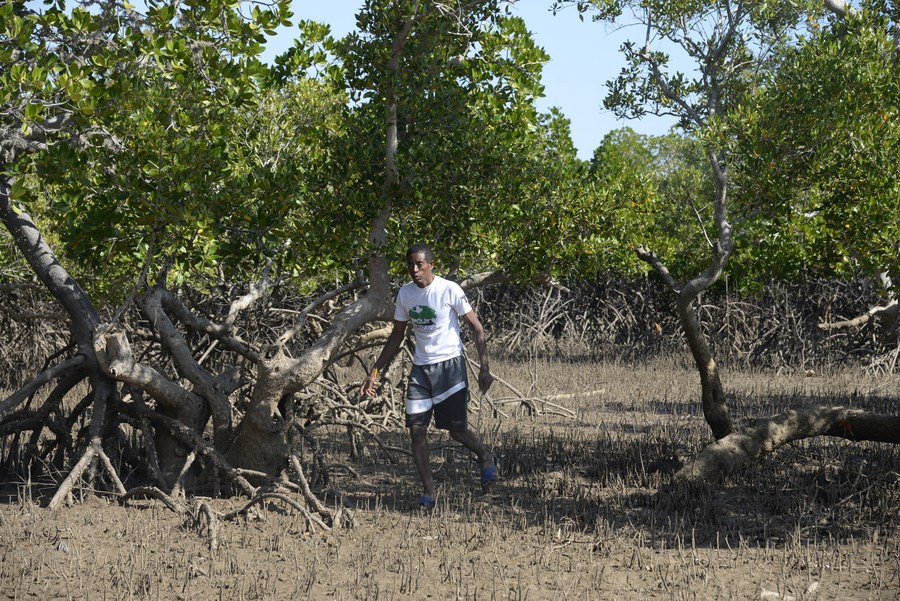
File photo taken on May 23, 2023, shows Justin Ramanahirana, president of a community organization managing mangrove conservation, walking among mangroves near the village of Kivalo, southwestern Madagascar. (Xinhua/Ling Xin)
"Mangroves have high capacities to sequester carbon compared to other types of forests. And in recent years, many actors consider mangroves as a strategy for carbon offsetting, and they are taking action to tackle climate change," Lilia Rasolofomanana, coordinator of the Mangrove Program at the World Wide Fund for Nature (WWF) Madagascar, told Xinhua.
With 350 members, the Analamaitso tsy ho gnan'olo takes care of reforestation on a voluntary basis, conducts patrols with forest rangers, cleans the village and raises public awareness among the inhabitants of the protection of the mangrove. This successful experience attracted other similar associations and organizations in the country which came to Kivalo to exchange information on mangrove protection.
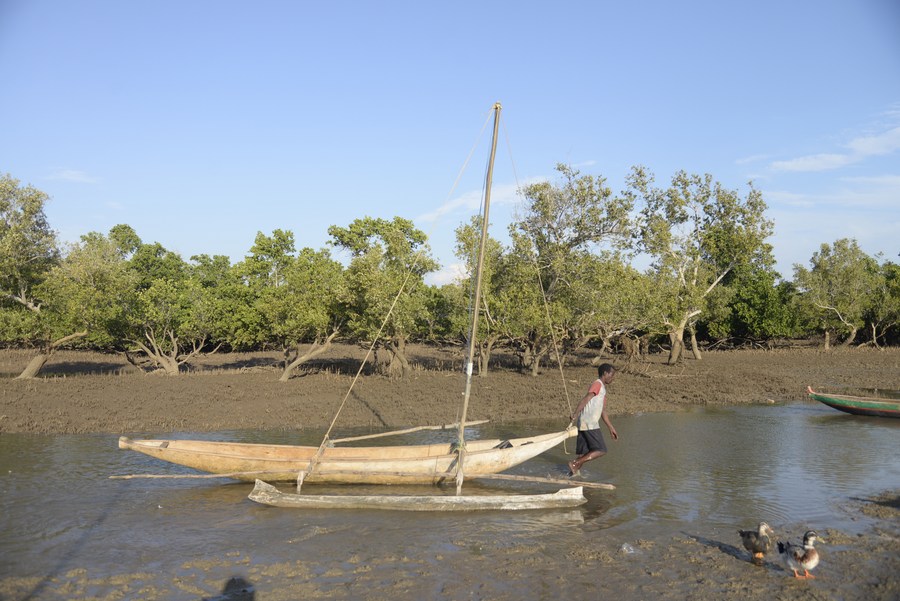
File photo taken on May 23, 2023, shows a villager walking through water with mangroves in the background near the village of Kivalo, southwestern Madagascar. (Xinhua/Ling Xin)
With the support of technical and financial partners such as the WWF, Kivalo has achieved sustainable development propelled by environmental protection. Local communities are able to install solar thermal collectors to store seafood thanks to its partners and to rehabilitate a primary school ravaged by a cyclone, Ramanahirana said.
"The result of a study commissioned by the WWF in 2021 to analyze the socioeconomic values of mangroves showed that the estimated economic and total value for the mangroves of Madagascar is at 578 dollars per hectare per year," Rasolofomanana said.
According to data from the Ministry of Environment and Sustainable Development, Madagascar has about 227,150 hectares of mangrove forests. The country recorded a net loss of 8,526 hectares of mangrove between 1996 and 2016, but a gain of 1,446 hectares from 2016 to 2020. ■


